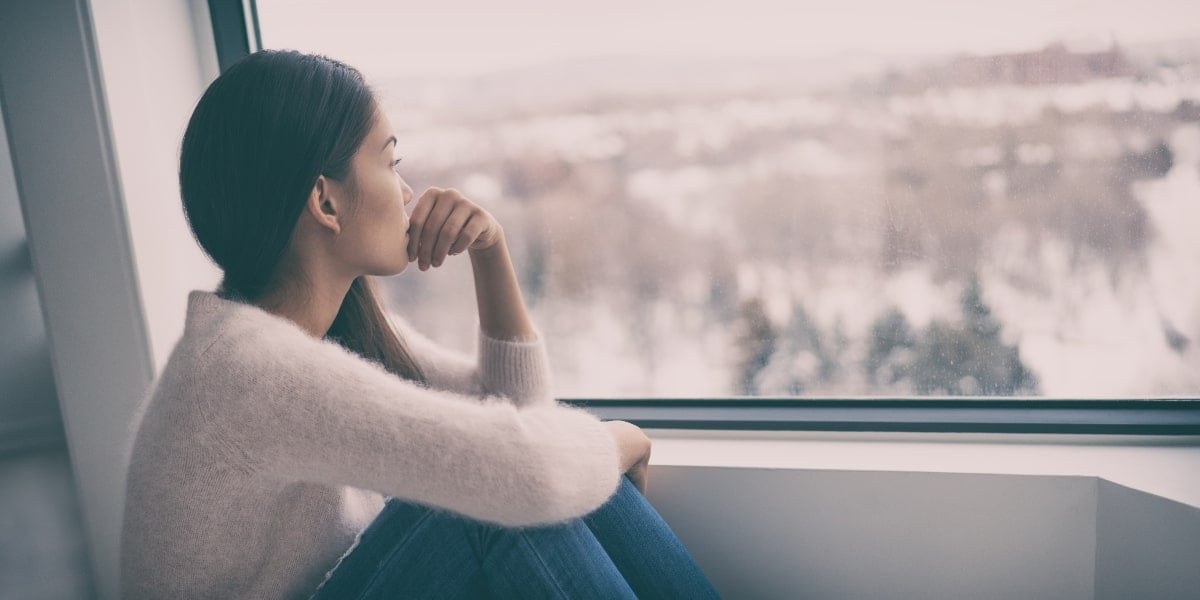Tackling Seasonal Depression: How Red Light Therapy Can Help
Everyone gets the winter blues now and then, as colder weather and darker skies can dampen the moods of even the cheeriest of people. For some people, though, the winter blues are more than a passing mood: the dark days and isolation of winter can cause symptoms of seasonal affective disorder (SAD). Also known as winter-pattern SAD, winter depression, or seasonal depression, SAD is a real mental health concern and form of depression – and it can be difficult to treat. Fortunately, red light therapy can help reduce the symptoms of seasonal depression.
Seasonal Depression Symptoms
Symptoms of seasonal depression usually come every year with the shorter days of winter, when you receive less exposure to natural light, and hang around until the days get longer in the spring. However, seasonal depression can occur during the summer, when heat drains you of energy, longer days lead to changes in your routine, pressure to have fun, and allergies cause mood changes.
When it comes to symptoms, seasonal depression is similar to clinical depression, also known as major depression; the main difference is that seasonal depression comes and goes with the change of seasons.
Winter Depression Symptoms
- Eating too much
- Sleeping too much
- Staying away from other people
- Gaining weight
Summer Depression Symptoms
- Anxiety
- Restlessness
- Insomnia
- Poor appetite
- Headaches or migraines
- Feeling irritable
- Lack of motivation
Major Depression Symptoms
- Having depressed feelings most of the time
- Experiencing reduced energy and sluggishness
- Lacking interest in things you previously participated in
- Having feelings of worthlessness or hopelessness
- Having trouble with concentration
- Feeling agitated
- Thinking about suicide or death
Both normal major depression and winter-pattern SAD are marked by changes to sleep, appetite, or weight. It is important to know that you don’t have to have all the symptoms associated with major depression or SAD to have either form of depression.
A mental health professional may diagnose you with seasonal depression if you experience some of the symptoms happening during a specific season, winter in this case. While you could have SAD even if you do not experience symptoms every year, you would need to experience symptoms for at least two consecutive years to receive a diagnosis of seasonal depression. What’s more, your depressive episodes need to occur within specific seasons rather than sporadically or continuously throughout the year.
How to Manage Symptoms of Season Depression
You don’t have to suffer through winter every year, feeling sad, tired, listless, and just waiting for spring. You can take steps to help manage the symptoms of seasonal affective disorder, including specific winter-pattern SAD.
Light therapy is the cornerstone of seasonal depression treatment
While there is no clear cause of seasonal depression, medical professionals think that shorter days and less sunlight trigger chemical changes in the areas of the human brain. More specifically, changes in daylight affects our 24-hour circadian clock, which regulates our sleep and wake cycles, digestion, hormonal activity, and other important bodily functions. Light therapy helps make up for the lack of natural light that you miss during winter.
Light therapy uses devices that emit various types of artificial light. Each device addresses seasonal depression in a different way. A red light therapy device can stimulate your brain to follow a more natural circadian rhythm, helping with mood and better sleep.
Other treatments for SAD include:
- Vitamin D
- Talk therapy
- Medication
A health provider may recommend a specific treatment or a combination of treatments to help with your symptoms. A combination of treatments may be recommended to manage this problem. Because it causes no side effects, red light therapy can complement other forms of treatment.
Wellness Practices for SAD
You can improve seasonal depression by optimizing your wellness, which is an umbrella term that covers all aspects of health, including physical, mental, emotional, intellectual, social, and spiritual components. Wellness practices may help with your mood, mental health, and other aspects of your health.
Tips for improving your wellness
- Practice mindfulness, which focuses on paying attention to the here and now without judging it
- Take time for deep breathing
- Follow a healthy, balanced diet
- Find healthy stress management techniques that work for you
- Follow a consistent bedtime and sleep routine
Red light therapy can be an effective part of your wellness activities, as red and near-infrared light provide wavelengths of light that stimulate cell mitochondria. This, in turn, leads to better cellular health that can be seen in health and wellness benefits throughout the body and mind. Red light therapy is associated with a wide variety of benefits, such as improving sleep cycle disturbances, boosting mood, and other changes that may help with depression, including seasonal depression.
For more information on using red light therapy to tackle seasonal depression, consult with your TheraLight provider.
This blog was originally published on December 27, 2021, and was last updated on February 12, 2024.

